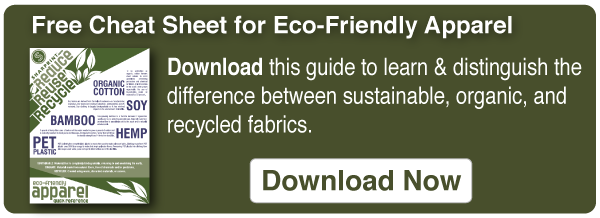
 As the eco-friendly movement grows in popularity and awareness, consumers are increasingly looking for ways to encourage organic and sustainable farming and manufacturing processes. For example, organic or green clothing is one way to ensure that money is spent on material grown by organic standards and avoids the use of pesticides, chemicals and preservatives.
As the eco-friendly movement grows in popularity and awareness, consumers are increasingly looking for ways to encourage organic and sustainable farming and manufacturing processes. For example, organic or green clothing is one way to ensure that money is spent on material grown by organic standards and avoids the use of pesticides, chemicals and preservatives.
About Organic Clothing
Just as with fruit and vegetables, organic clothing must be manufactured utilizing material that meets organic agricultural standards. One of the most important factors is the avoidance of chemicals commonly used in standard farming and manufacturing processes. For example, over 16 percent of the world’s insecticides are used on cotton crops, which is more than any other single crop.
Conversely, organic cotton grows without any pesticides or fertilizers and avoids the utilization of genetically engineered cottonseed.
Other types of organic fabrics include wool, hemp and silk. Hemp is a popular organic fabric because hemp grows well with little water and requires no pesticides. In addition, hemp is a renewable resource that regrows easily.
Another growing trend in green clothing is the use of recycled items such as plastic bottles. Called “POP” fabric, this represents an environmentally friendly option from start to finish. Soy is also growing as an environmentally friendly manufacturing choice using recycled tofu, soybean oil and soy milk, which is then spun and blended with organic cotton to make green clothing. Soy is also naturally UV resistant and moisture resistant, making it an excellent choice for activewear items.
Moreover, another organic clothing trend is tencel, which is wood pulp spun with organic cotton and other fibers to create a green fabric material.
Finding Organic Clothing
The search for organic clothing will require more effort than simply picking up the first shirt at the local mall, since many manufacturers are reluctant to go through the more expensive and time-consuming process of producing green clothing.
In addition, some so-called organic clothing still contains chemicals due to bleaching or dyeing. Consumers should read tags very closely to ensure that the product meets organic agricultural standards and that no chemicals used in the manufacture of the clothing. Ideally, a cotton item should have Organic Trade Association (OTA) approval to indicate organic certification and/or meets the organic standards of the U.S. Department of Agriculture (USDA).
Another interesting consideration is bamboo fabric clothing, which many automatically assume to be organic. However, in order to use the bamboo for material, chemical solvents and bleaching may be used in the manufacturing process. Not all bamboo contains chemicals, however, as it is possible to farm bamboo without chemicals or pesticides and can be made into fabric without the use of additional chemicals. Again, check the tag to ensure that the clothing meets organic standards in order to be certain that chemicals were not used during the manufacturing process.
Do not be surprised to pay a significantly higher cost for organic clothing, as the cost to manufacture organic clothing is much higher than processes that include chemicals, and most manufacturers pass along this cost to consumers. A cotton t-shirt that contains only 10 percent organic fiber will cost about 7 cents more on average, while a 100 percent organic shirt will cost up to 50 percent more than a conventional t-shirt.
Caring for Organic Clothing
Unlike standard cotton clothing, organic clothing requires a certain type of care. Most green clothing items have care instructions on the back of the label to ensure the garment will retain its shape and appearance for as long as possible. Note that some items are hand wash only. Clean by hand in a sink using cold water and a small amount of eco-friendly laundry detergent.
Look for biodegradable laundry or phosphate free laundry for all items and use cold water wash cycles to help reduce personal impact on the environment and provide the best care for the organic clothing. Environmentally friendly laundry detergent should not have any dyes, fragrances or phosphates.
In addition, avoid traditional stain removal products as those too contain chemicals. Instead, use some lemon juice to remove stains on green clothing but be aware that lemon has natural bleaching properties.
Hang organic clothing to dry, which saves energy since the dryer is not used and is a far more gentle method of drying organic fabric to help prevent shrinkage.
While finding and caring for organic clothing requires more effort, green clothing consumers can feel confident that they are helping reduce the use of chemicals and pesticides in farming and manufacturing throughout the world.

Leave a Reply
Your email address will remain private and will not be shared.